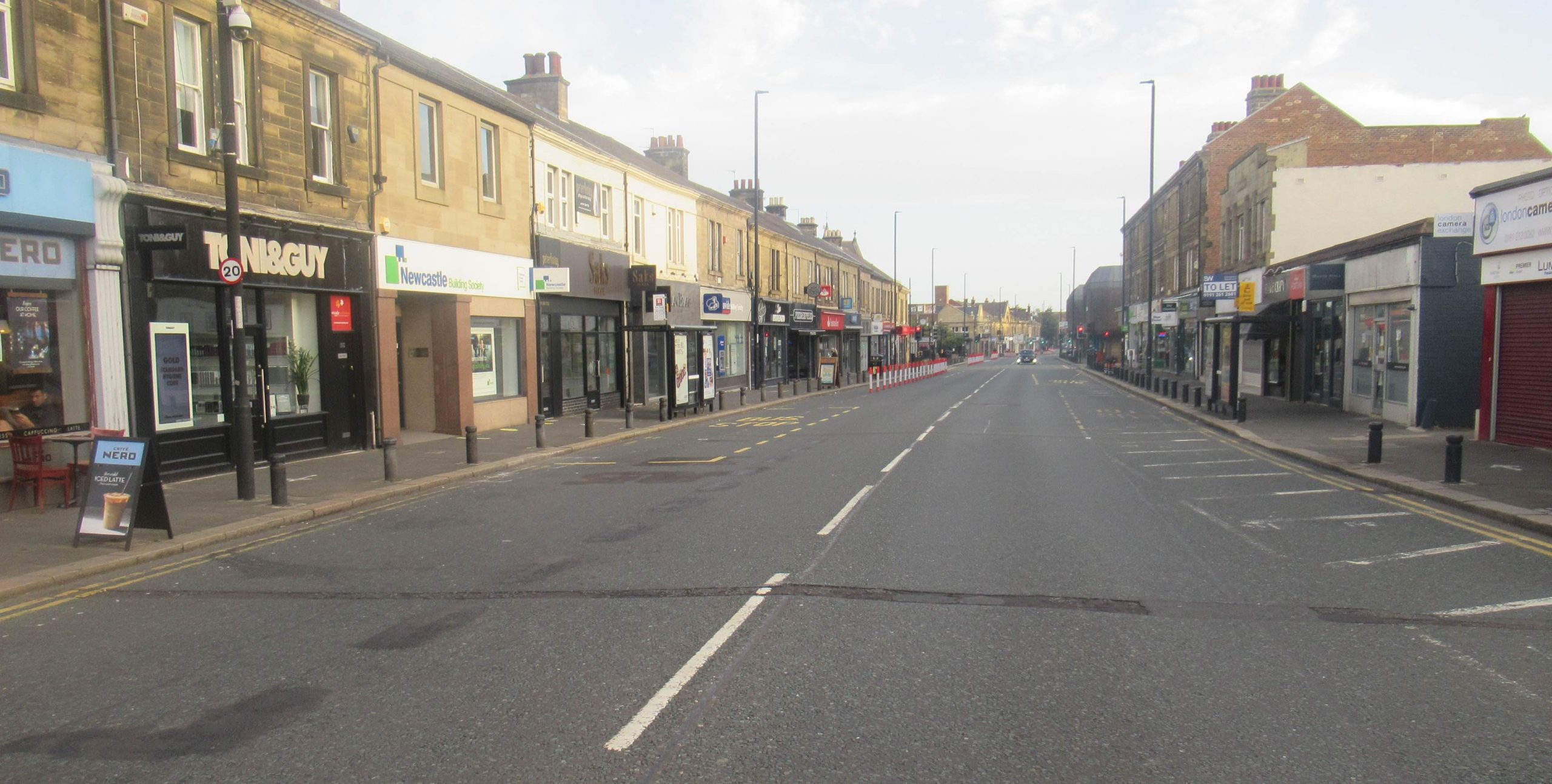
It should be no surprise to anybody that air quality temporarily improved in 2020. In March 2020, the Guardian reported that that the Coronavirus pandemic had led to a huge drop in air pollution right around the world. Newcastle was no different.
The graph below, from the urban observatory, shows that traffic in Newcastle dipped to 40% of normal levels in March 2020 before slowly increasing again as restrictions were lifted. 40% of current traffic levels is what a child in the 1970s would have experienced when growing up. In 1974 traffic levels were about 40% of what they were in 2019. By May this had increased to 50% (~1983 traffic levels), by June it was 60% (~1987) and in July and August at about 80% (~1998).
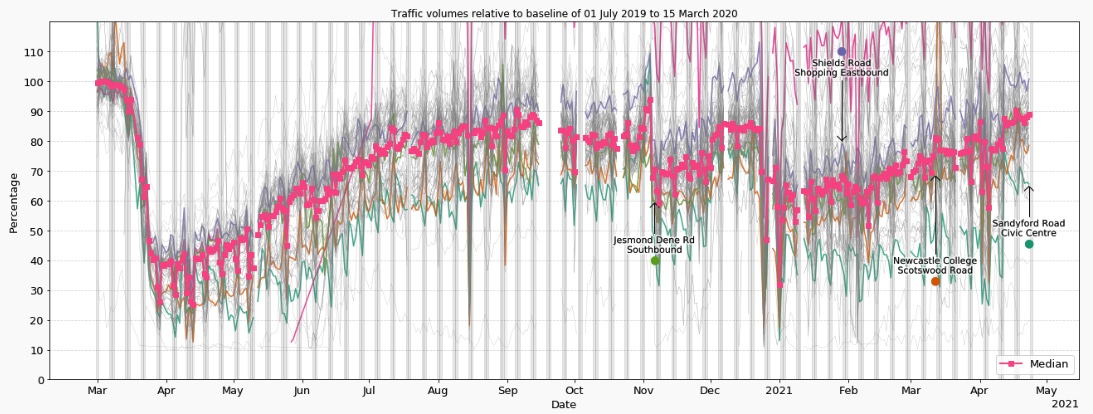
Traffic volumes in Newcastle March 2020 – May 2021
Across Newcastle, this led to some of the lowest ever pollution readings ever recorded with only two locations in Newcastle at or exceeding the UK legal limit of 40μg/m3 in 2020.
Gosforth
In Gosforth, the highest annual average reading in 2020 was 28μg/m3, about half the level recorded in 2019.
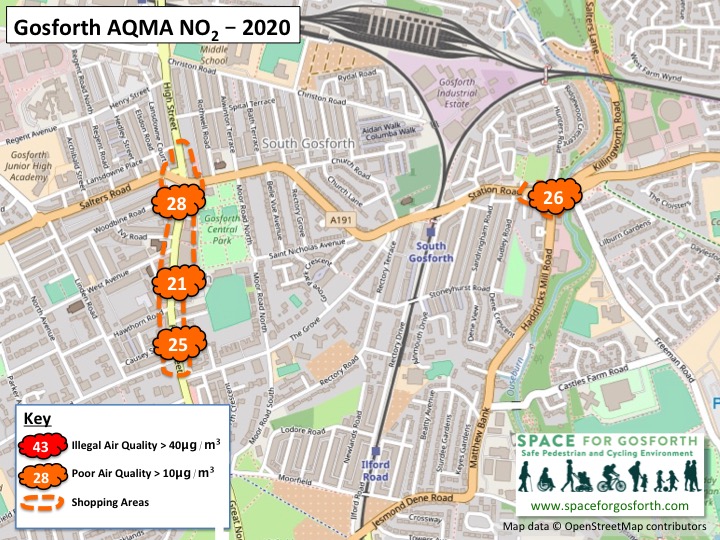
Newcastle City Centre
In the City Centre, only Percy Street next to Haymarket bus station was at the UK legal limit (39.5μg/m3 before rounding up). St Mary’s Place, Strawberry Place and Blackett Street were all very close to the limit.
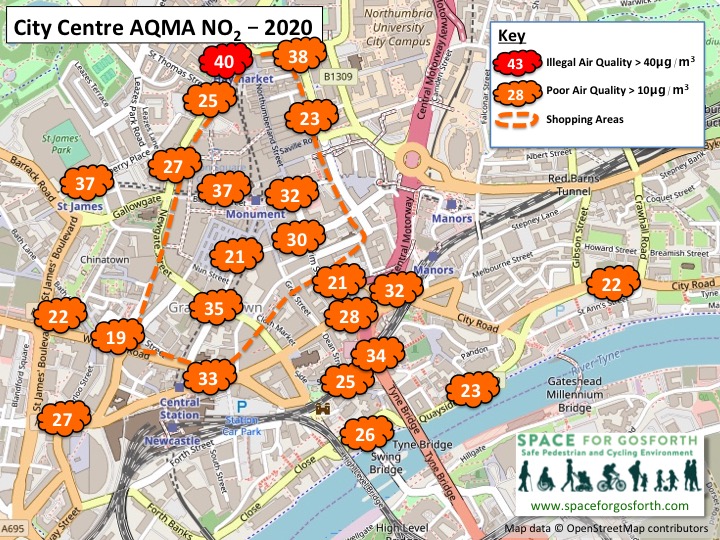
Denton Burn
Denton Burn, west of Newcastle, showed a similar reduction to Gosforth. In 2019, the reading at Cowgate roundabout was 51μg/m3.
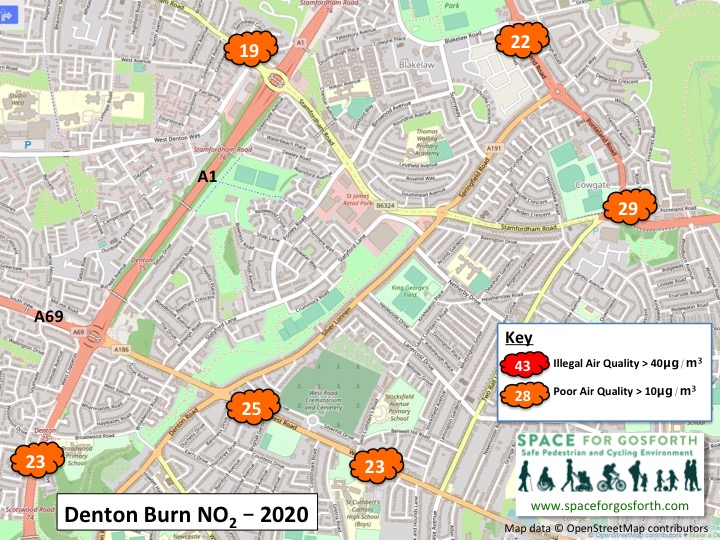
The Coast Road and Byker
In 2020, the highest recorded level of air pollution was the same as 2019, at the entrance to Jesmond Park West near People’s Theatre. This was 57μg/m3 compared to 93μg/m3 in 2019. Only the monthly reading for April 2020 was under the annual limit, and that was still 36μg/m3.
In 2019 we said “Newcastle and North Tyneside Councils need to urgently consider measures to address air pollution on The Coast Road as a CAZ [Clean Air Zone] by itself is unlikely to reduce air pollution levels.” To date, no additional proposals have been announced for The Coast Road.
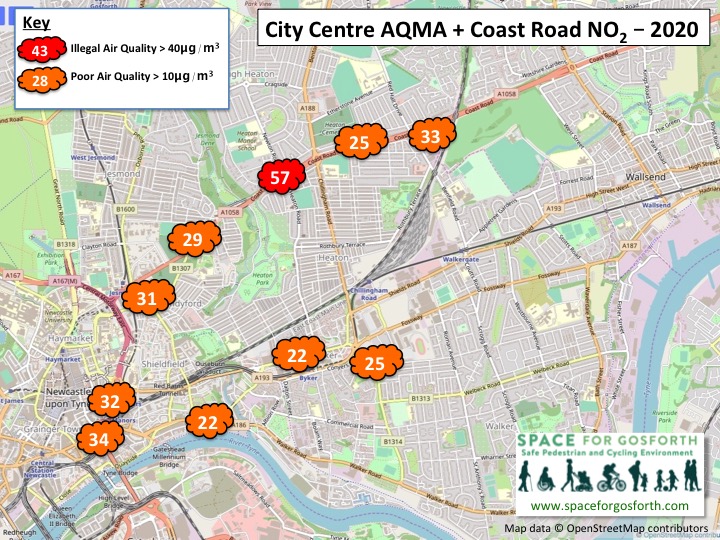
Temporary Respite
Almost certainly these reductions will be short-lived. The Chronicle reported in September 2020 that “Experts warn Newcastle traffic and air pollution ‘back to pre-Covid levels’ – and could get worse“. Monitoring from the Urban Observatory suggests that traffic levels in 2021 are back at the level they were before Covid.
More recently, the World Health Organisation (WHO) cut its recommended maximum pollution levels from 40μg/m3 to 10μg/m3. Virtually nowhere in Newcastle currently meets this target.
The WHO also revised its guidance for PM2.5, very small particulate matter pollution, from 10μg/m3 to 5μg/m3. In Newcastle this is only measured outside the Civic Centre. The 2020 reading was 5.5μg/m3.
The Guardian reported in the same article that “Scientists stressed that even the new [WHO] limits should not be considered safe, as there appears to be no level at which pollutants stop causing damage. They said reducing pollution would boost health even in nations with relatively clean air” and that “A 2019 review concluded that air pollution may be damaging every organ in the body, causing heart and lung disease, diabetes and dementia and reducing intelligence.”
A recent report from Imperial College has also concluded that “Exposure to air pollution before the pandemic increased the risk of hospital admissions if a person became infected with COVID-19.”
The current expected launch date for Newcastle’s Clean Air Zone is now July 2022.
SPACE for Gosforth has previously summarised results for 2019, 2018, 2017 and 2016.

